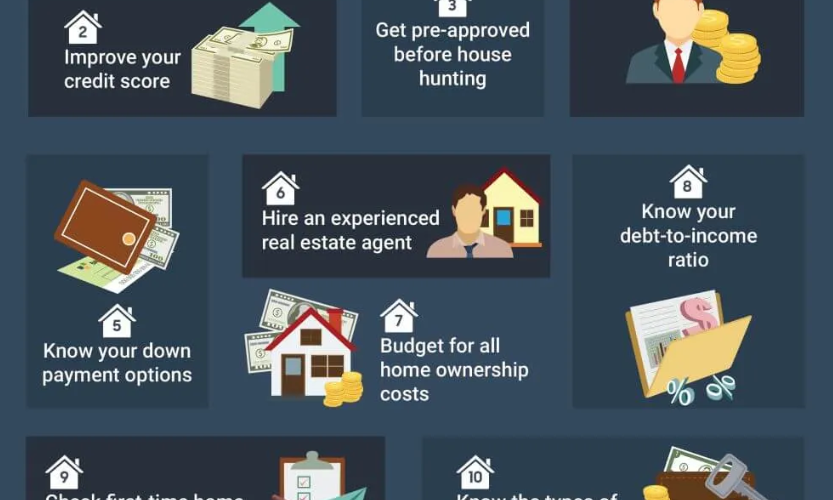Buying your first home is a major life milestone, and for many, it’s also one of the biggest financial commitments they’ll ever make. If you’re a first-time homebuyer, understanding how a first time buyer home loan works is the key to getting started on the right foot. This guide will walk you through everything you need to know—from eligibility and application steps to the types of loans available and how to choose the right one for your needs.
Contents
- 1 What Is a First Time Buyer Home Loan?
- 2 Who Qualifies as a First-Time Buyer?
- 3 Types of First Time Buyer Home Loans
- 4 Step-by-Step Guide to Applying for a First Time Buyer Home Loan
- 5 Common Requirements for First Time Buyer Home Loans
- 6 Tips to Increase Your Chances of Getting Approved
- 7 Advantages of a First Time Buyer Home Loan
- 8 Mistakes First-Time Buyers Should Avoid
- 9 Final Thoughts
What Is a First Time Buyer Home Loan?

A first time buyer home loan is designed specifically to help individuals purchasing their first home. These loans often come with benefits such as lower down payments, reduced interest rates, and flexible qualification requirements.
Many government programs, banks, and private lenders offer special loan packages for first-time buyers to make homeownership more accessible.
Who Qualifies as a First-Time Buyer?
You might be surprised to learn that the definition of a “first-time buyer” is broader than you think. According to the U.S. Department of Housing and Urban Development (HUD), you may qualify if:
- You have not owned a home in the past three years.
- You are a single parent who has only owned a home with a former spouse.
- You are a displaced homemaker who has only owned property with a spouse.
- You’ve owned a principal residence not permanently affixed to a foundation (e.g., a mobile home).
Always check the specific requirements of the loan program you’re considering, as definitions may vary.
Types of First Time Buyer Home Loans
There are several types of loans available for first-time buyers. Here’s a breakdown of the most popular ones:
1. FHA Loans
- Backed by the Federal Housing Administration
- Down payments as low as 3.5%
- Lower credit score requirements
2. VA Loans
- Available to eligible veterans and active-duty service members
- No down payment required
- Backed by the U.S. Department of Veterans Affairs
3. USDA Loans
- For rural and suburban homebuyers
- No down payment required
- Income limits apply
4. Conventional Loans
- Not government-backed
- May require higher credit scores
- Some programs allow down payments as low as 3%
5. State and Local First-Time Buyer Programs
- Grants or down payment assistance
- Vary by state or locality
- May include financial education courses
Step-by-Step Guide to Applying for a First Time Buyer Home Loan
Here’s a simple walkthrough to help you understand the process of securing a first time buyer home loan:
Step 1: Assess Your Financial Health
- Check your credit score
- Calculate your debt-to-income ratio
- Review your savings for a down payment and closing costs
Step 2: Get Pre-Approved
- Shop around for mortgage lenders
- Submit income and employment verification
- Get a pre-approval letter to show sellers you’re serious
Step 3: Choose the Right Loan Type
- Compare interest rates and terms
- Understand the pros and cons of each loan program
Step 4: Find Your Home
- Work with a real estate agent
- Keep your budget and loan limits in mind
Step 5: Complete the Application
- Submit all required documents
- Authorize credit checks and financial background reviews
Step 6: Underwriting and Approval
- The lender verifies all details
- May request additional documentation
Step 7: Close the Loan
- Sign paperwork
- Pay closing costs
- Get the keys to your new home!
Common Requirements for First Time Buyer Home Loans
To improve your chances of approval, be prepared to meet these basic requirements:
- A stable income and job history
- A credit score (varies by loan type, but 580+ for FHA)
- Proof of assets (bank statements, investments)
- Identification and Social Security number
- Tax returns and W-2s for the past 2 years
Tips to Increase Your Chances of Getting Approved
- Improve Your Credit Score: Pay off debt, avoid late payments, and check for errors.
- Save for a Down Payment: The more you can put down, the better your terms may be.
- Avoid New Debt: Don’t open new credit lines or make large purchases during the loan process.
- Get Pre-Approved Early: It gives you clarity and bargaining power when shopping for homes.
Advantages of a First Time Buyer Home Loan
- Lower down payment options
- Reduced interest rates
- More lenient credit score requirements
- Access to grants and assistance programs
Mistakes First-Time Buyers Should Avoid
- Skipping Pre-Approval: You need to know what you can afford.
- Overextending Your Budget: Consider total costs, including taxes, insurance, and maintenance.
- Ignoring Loan Terms: Always read the fine print before signing.
- Failing to Compare Lenders: Different lenders offer different rates and terms.
Final Thoughts
Getting a first time buyer home loan can be both exciting and intimidating. With the right preparation and a solid understanding of the process, you’ll be well-equipped to navigate the journey successfully. Remember to take your time, do your research, and work with professionals who understand the nuances of first-time home buying.
Homeownership is within reach—especially when you know how to make smart, informed decisions every step of the way.
